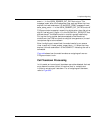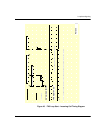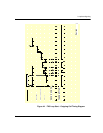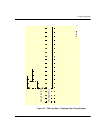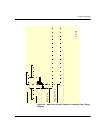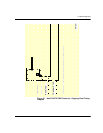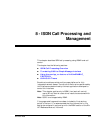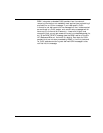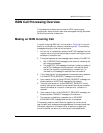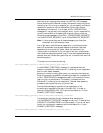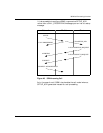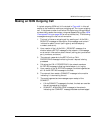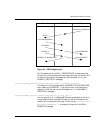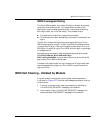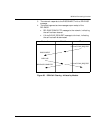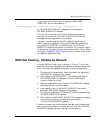
ISDN Call Processing Overview
November 2009 318
ISDN Call Processing Overview
This subsection presents an overview of ISDN incoming and
outgoing call setup and tear down and overlapped dialing. Switched
56 calls use a similar mechanism.
Making an ISDN Incoming Call
A typical incoming ISDN call is illustrated in Figure 48. In this call
scenario, the Brooktrout module is answering a call. The following
message exchange is relative to the module:
1. Call arrival is indicated by receipt of a SETUP message from the
network containing information about the call (calling party and
called party numbers, etc.).
2. The module generates two messages upon receipt of the SETUP.
CALL PROCEEDING message to the network indicating the
call is being processed.
L3L4mSETUP_IND message to the host indicating receipt of
the SETUP message from the network; information about
the call (calling party and called party numbers, etc.) is
included in this message if received from the network.
3. If the incoming call is to be accepted, the host optionally sends an
L4L3mALERTING_REQUEST message to the module.
4. Upon receipt of the L4L3mALERTING_REQUEST message, the
module sends an ALERTING message to the network.
5. The host then sends an L4L3mCONNECT_REQUEST to the
module, asking that the call be connected; the host can consider
the call connected at this point unless an error indication is
received.
6. Upon receipt of the L4L3mCONNECT_REQUEST message, the
module sends a CONNECT message to the network.
7. The network immediately responds with a CONNECT
ACKNOWLEDGE message and the call is connected.
This scenario does not use B-channel negotiation, which would
require additional message exchanges between the module and host.
B-channel negotiation is a feature that allows you to specify on
which B-channel you want an incoming call to be established.



